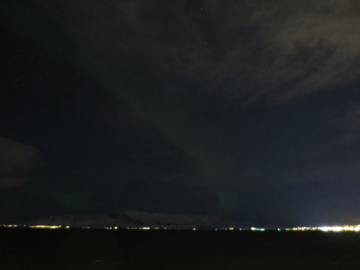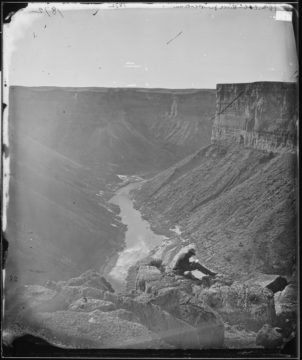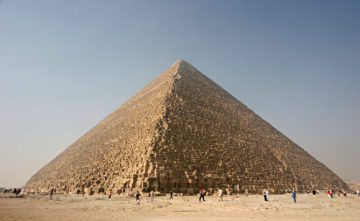by Jochen Szangolies

I would not consider myself a particularly ‘outdoors’ sort of person. Much of my work and leisure is spent in front of one screen or another, or between the pages of a book (less of the latter than I’d like, at that). However, in those last years lost to COVID-19, I, like many others, found myself spending increasing amounts of time on long hikes through the countryside.
It came as no small revelation to me how restorative that time spent wandering—alone, occasionally, but mostly together with my wife, who deserves credit for motivating me to peel myself off of the couch and making my first tentative steps into the great outdoors—turned out to be. Indeed, it almost feels a bit like cheating: a week’s worth of work anxiety, stress, and general ill-ease washed away, or at least smoothed over, by a few hours spent in the woods.
That’s not to say I would submit it as a cure-all, or some great spiritual revelation. After all, there is presumably a perfectly ordinary evolutionary reason the woods seem to satisfy some inner longing to exchange my everyday surroundings for a more natural habitat. Most zoos have long since realized that their animals fare better in some approximation of their ancestral dwellings, while we still lock ourselves away in small boxes aggregated into great concrete and glass agglomerations. It’s just something that turns out to work for me, that I was lucky to add to my self-care tool-box.
But that isn’t what I want to consider here. On those hikes, immersed in nature (such as it is: sticking to the hiking trails, I’m well aware that I’m not exposed to unfettered wilderness, but rather, a carefully curated approximation filtered through a cultural lens), I found my inner peace repeatedly disturbed by the traces of human disregard—food wrappers on the side of the path, old drink cans or cigarette buds. All of these telling a story of how, to some, it isn’t worth the infinitesimal amount of effort to carry one’s garbage back home, or at least to the next bin, to at least try and sustain some relatively unspoiled preserves.
Here was another thing I learned about myself. Usually, I’m not one to care too much about other’s moral failings. We all just muddle through, in the end, and most of us, I believe, put in a good-faith effort. Plus, there is always a relational element to our moral judgments: what we find reason to condemn in our opponents, we make ready excuses for in our friends (or even ourselves). Moral action is difficult, and occasionally, everybody errs—or, as the Aztecs put it, sometimes we stumble, because the (moral) ground beneath our feet is tlalticpac, slippery and slick.
But despite my best attempts at keeping an equanimous disposition, this careless despoliation by discarded chewing-gum wrappers, plastic bottles and other garbage just kept bothering me, like a sore in my mouth that would heal if I could just stop probing it with my tongue. For the longest time, I couldn’t quite put my finger on why. Was it just the carelessness demonstrated by those unknown litterbugs? The lack of effort? The failure of thinking beyond their own immediate satisfaction?
A part of it is, I think, the unfairness inherent in the asymmetry of the situation: it takes a combined effort to keep, say, a beautiful clearing pristine, while one careless individual can ruin it for all involved. This gives those acting against the common interest an undue weight and power over those who play by the rules, unfairly marginalizing them. This is a pattern that finds its echo in many aspects of society: it only takes a few, or even just a single individual, to ruin it for all. I remain convinced that even some of the greater challenges faced by society today could be far more easily met, were it not for those who, out of a simple lack of care, leave everything they touch a little worse for all.
But that’s not quite it. There seems to be an element of self-denial in the act of needless despoliation or destruction that isn’t captured by simple carelessness—after all, there is some benefit of not having to carry your garbage home that’s won by tossing it about, however small it might be.

It wasn’t until I read Matthew Olzmann’s poem Letter to the Person Who Carved His Initials into the Oldest Living Longleaf Pine in North America that things finally clicked for me. The poem begins by asking what it is like to live without awe—and there, it struck me: it’s the lack of awe that makes a petty act of vandalism from one of simple carelessness into one that actively lessens the perpetrator, that signals a wanton cutting off of the self from something beyond any individual human being, a greatness possessed, or pointed to, by what we perceive as awe-inspiring. As such, it is an attempted self-aggrandizement that ends up as self-negation.
Grand Vistas And Deep Time
Consider the Grand Canyon. Most would (I hope) agree with the proposition that it is worth preserving; that it would be wrong in a moral sense to just fill it up with concrete, blast away its walls carved by the steady action of water over millions of years, or otherwise debase it. But despite the strength of this intuition, it can be surprisingly hard to point to precisely why it is worthy of such consideration, why it deserves to have a moral value attached to itself. After all, the Grand Canyon is not a living entity: it can feel no pain or suffering, it has no goals that could be frustrated, no ultimate end it strives towards, no interest or stake in its own continued existence.
Sure, a utilitarian might hold that looking at it gives humans pleasure, so to maximize good, one should allow humans to look at it; but this locates the value of the Grand Canyon within human appreciation (it just looks good to us), which appears insufficient. It seems like there should be some quality inherent to the Grand Canyon that infuses it with value, not the mere accidents of human biology, neurology and evolutionary history that makes us appreciate its sight.
The concept of awe brings us some way towards recognizing that inherent quality. In Awe: The New Science of Everyday Wonder and How It Can Transform Your Life, Berkeley professor of psychology Dacher Keltner defines awe as “the feeling of being in the presence of something vast that transcends your current understanding of the world”. This is fine as a first pass—both vastness and transcendence seem clearly important properties of the awe-inspiring. But what, to me, characterizes awe is the connection that is being fostered between the individual self and the grandness of the forces that are at work in the universe to make possible that very moment of awe.

Let me try and unpack this. The Grand Canyon, as such, is an object that points beyond itself—beyond the immediate way it appears to us, as we view it right now, right here. It tells of deep time, of geological eons in which forces of erosion worked on rock to carve its intricate shapes, deepening the Colorado River’s bed into a vast cleft in the world. These forces are insignificant on human scales: a steady flow might shape rocks, but under its usual aspect, we take a stone to be unchanged by water rushing against it—stone blocks water, but water doesn’t shatter stone. But on scales nearly incomprehensible from the human perspective, such forces shape landscapes. This is, then, what the Grand Canyon connects us to: scales and forces and unfoldings beyond any individual human perspective, that we would otherwise not have any access to.
Awe is then the feeling inspired by that singular connection to something greater than ourselves. It allows us to see beyond, and to some degree, step out of the confines of our everyday concerns; as such, it makes us greater, by connecting us to something greater. To sever that connection, to disregard it, is then to lessen ourselves, and it is there the offense lies: denying this connection is to refuse to accept anything greater than one’s self, and in doing so, diminishing it. By reaching for the knife, the addressee of Olzmann’s letter sought to elevate himself, stamping his existence onto something grander, but succeeding only in self-debasement.
It is similar with human-made awe-inspiring structures. Consider how Stonehenge, for example, connects us with the cares and struggles of its builders, some 5000 years ago. As argued previously, these megalithic structures are testaments to the fact that there was a particular perspective on the world here, a particular way of apprehending it and interacting with it (and thus, not just a desire to make one’s mark upon it). Thus, they connect us with the larger unfolding of human consciousness: they show us that beyond our narrow perspective, untold multitudes exist, lead lives whose struggles are just as important as our own are, whose joys as joyful and whose sorrows as deep. That the universe is vast not just in extent and duration, but vast in story, too—all those stories of all the lives ever lived, out there, just as real as your own.
Beyond Self And No-Self
What awe affords us, then, is a way of peeking above the fence: of realizing that there is a whole world out there beyond our immediate concerns. This has the power of inducing a particular kind of humility that comes from realizing the ultimate smallness of your role in the greater concerns of the universe: no matter who you are, peasant or prince, nothing you do is ever more than a blip against the backdrop of the vastness of Earth’s history, and Earth itself is but a speck of dust in a sea of stars.
This realization might easily drive us to despair: what could we ever hope to aspire to, in this insignificance, on this “placid island of ignorance in the midst of black seas of the infinity”, as Lovecraft put it? Indeed: the dark cousin of awe strikes me to be Lovecraftian terror, a realization of one’s insignificance in the face of the vastness of, well, anything of true significance.
The difference between such cosmic horror and awe is that the former sees us as little isolated specks of consciousness, isolated in a vast, indifferent emptiness, while the latter connects us to the vastness, breaks down our isolation, subsumes us in the unfurling of a grander process. That difference, then, is rooted in our attitude toward the self: clinging to it sees us isolated and alone; letting go realizes our being part of that great becoming the awe-inspiring points to.
The petty acts of vandalism and despoliation then might be seen as ineffectual attempts to ward off that horror, borne, as most callous acts are, from ignorance: rather than stare into the void, those perpetuating such acts seek to avert their eyes, to shield themselves from the realization of their own insignificance. Perhaps this explains why such acts often take the form of trying to assert dominance, in one fashion or another—to perpetuate one’s claim to existence by carving one’s initials into something that has the longevity to carry them into the far future, or to demonstrate one’s power over nature. These are then acts of an inflation of ego in the face of a perceived threat—a pufferfish-like response aimed at seeming bigger than the unspeakable otherness the awe-inspiring threatens to those clinging to the self. This goes some way towards a reconciliation: actions of this kind then are, if not excusable, at least pitiable and human.

Perhaps it should strike us as no wonder, than, that in our age of self, of its obsessive presentation, awe seems in short supply. Even when the awe-inspiring is presented, it serves only as backdrop: look at me, in this beautifully serene mountain vista, in this sparkling moonlit pool, before the Great Pyramid of Giza! Awe, here, is borrowed in service of the self—twisting it into its opposite. What is a flower trampled, a boulder toppled, in pursuit of the perfect selfie? What is a rainforest burned for the perfect avocado toast?
Awe’s ethical value is in the connection it forges between the quotidian and the numinous, in the way it allows us to peek beyond the confines of our narrow perspective, in how it mirrors the grander unfolding of the world, fractal-like, within us as parts of that unfolding. As such, it may easily be taken to have a spiritual connotation: one might be tempted to add certain properties to that grand unfolding, to personalize, anthropomorphise it. But nothing about awe itself invites such connotations. There need be nothing supernatural about that which is simply greater than ourselves. Indeed, in this thinking, we again see the human tendency to view ourselves as some apex of the natural order: that which goes beyond us surely also must go beyond the natural.
But awe needs no such embellishment. The Grand Canyon connects us to deep, geological time; the longleaf pine to the unfolding of life; Stonehenge to the greater human story. In doing so, we realize—if we are ready to let go of thinking of ourselves as isolated specks of selfhood, divided from the rest of the world—how we are ourselves part of these grand vistas, part of one and the same life. Provided we do not shrink back, recede into our shells, sever that connection with some desperate act of misguided self-actualization, we can then learn to see beyond our immediate concerns, to realign our actions with our role in this larger context.
In other words: when next you are out in nature, and there’s no convenient bin around—have a look at the life around you; drink in the buzz of creatures large and small; dissolve your ego, a little at least, in the rustling of the leaves and the swaying of the branches—and just put that candy wrapper in your pocket.
